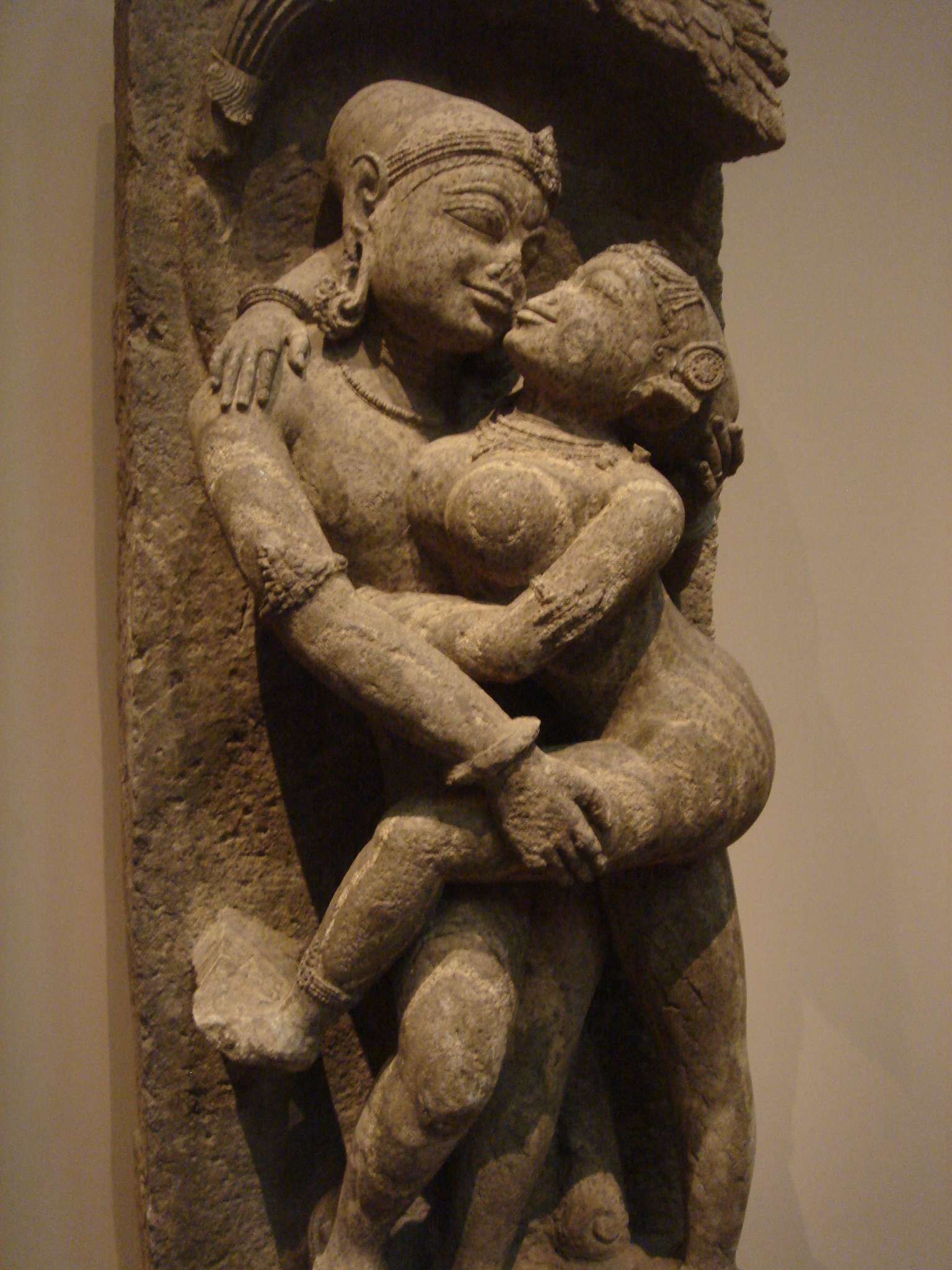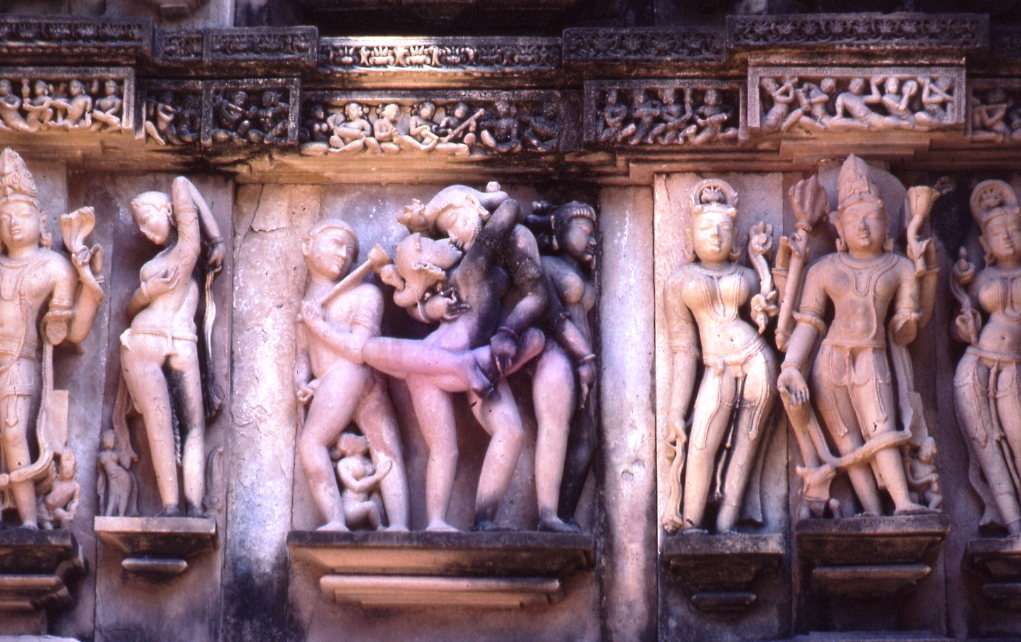Maithuna on:
[Wikipedia]
[Google]
[Amazon]
 Maithuna (
Maithuna (

 Maithuna intercourse has been traditionally interpreted to be performed with semen retention by the male practitioner, although other authors consider it optional, possibly relegated only to late Tantra. Early maithuna might have consisted on generating sexual fluids (''maithunam dravyam'', or solely ''maithuna'' by
Maithuna intercourse has been traditionally interpreted to be performed with semen retention by the male practitioner, although other authors consider it optional, possibly relegated only to late Tantra. Early maithuna might have consisted on generating sexual fluids (''maithunam dravyam'', or solely ''maithuna'' by
 Maithuna (
Maithuna (Devanagari
Devanagari ( ; , , Sanskrit pronunciation: ), also called Nagari (),Kathleen Kuiper (2010), The Culture of India, New York: The Rosen Publishing Group, , page 83 is a left-to-right abugida (a type of segmental writing system), based on the ...
: मैथुन) is a Sanskrit
Sanskrit (; attributively , ; nominally , , ) is a classical language belonging to the Indo-Aryan languages, Indo-Aryan branch of the Indo-European languages. It arose in South Asia after its predecessor languages had Trans-cultural diffusion ...
term for sexual intercourse
Sexual intercourse (or coitus or copulation) is a sexual activity typically involving the insertion and thrusting of the penis into the vagina for sexual pleasure or reproduction.Sexual intercourse most commonly means penile–vaginal pene ...
within Tantric sex
Tantric sex or sexual yoga refers to a wide range of practices carried on in Hindu and Buddhist tantra to exercise sexuality in a ritualized or yogic context, often associated with antinomian or impure elements, like consumption of alcohol, and ...
, or alternatively to the specific lack of sexual fluids generated, while mithuna is a couple participating in such a ritual. It is the most important of the five makara and constitutes the main part of the grand ritual of Tantra variously known as Panchamakara, Panchatattva, and Tattva Chakra. Maithuna means the union of opposing forces, underlining the nonduality
Nondualism, also called nonduality and nondual awareness, is a fuzzy concept originating in Indian philosophy and religion for which many definitions can be found, including: nondual awareness, the nonduality of seer and seen or nondiffer ...
between human and divine, as well as worldly enjoyment ('' kama'') and spiritual liberation (''moksha
''Moksha'' (; sa, मोक्ष, '), also called ''vimoksha'', ''vimukti'' and ''mukti'', is a term in Hinduism, Buddhism, Jainism and Sikhism for various forms of emancipation, enlightenment, liberation, and release. In its soteriologic ...
'').
Mithuna is a popular icon in ancient Hindu art, portrayed as a couple engaged in physical loving.
History

 Maithuna intercourse has been traditionally interpreted to be performed with semen retention by the male practitioner, although other authors consider it optional, possibly relegated only to late Tantra. Early maithuna might have consisted on generating sexual fluids (''maithunam dravyam'', or solely ''maithuna'' by
Maithuna intercourse has been traditionally interpreted to be performed with semen retention by the male practitioner, although other authors consider it optional, possibly relegated only to late Tantra. Early maithuna might have consisted on generating sexual fluids (''maithunam dravyam'', or solely ''maithuna'' by metonymy
Metonymy () is a figure of speech in which a concept is referred to by the name of something closely associated with that thing or concept.
Etymology
The words ''metonymy'' and ''metonym'' come from grc, μετωνυμία, 'a change of name ...
) in order to be ritually ingested, in a similar way to the edible three first Panchamakara. The shedding of semen is also compared to water-offering ('' tarpana''). This is related to similar practices like ''rajapana'', the drinking of female discharge found in Kaula Kaula may refer to:
People
* Prithvi Nath Kaula (1924–2009), Indian librarian
* William J. Kaula (1871–1953), American watercolor painter
* William M. Kaula (1926–2000), Australian-born American geophysicist
Other uses
* USS ''Kaula'' (AG- ...
Tantra, and the mixing of all five ingredients into nectar (''amrita
''Amrita'' ( sa, अमृत, IAST: ''amṛta''), ''Amrit'' or ''Amata'' in Pali, (also called ''Sudha'', ''Amiy'', ''Ami'') is a Sanskrit word that means "immortality". It is a central concept within Indian religions and is often referred t ...
'') in the Jagannatha temple of Puri
Puri () is a coastal city and a municipality in the state of Odisha in eastern India. It is the district headquarters of Puri district and is situated on the Bay of Bengal, south of the state capital of Bhubaneswar. It is also known as '' ...
, as described by Frédérique Apffel-Marglin.
Late sources like Abhinavagupta
Abhinavagupta (c. 950 – 1016 CE) was a philosopher, mystic and aesthetician from Kashmir. He was also considered an influential musician, poet, dramatist, exegete, theologian, and logicianRe-accessing Abhinavagupta, Navjivan Rastogi, pag ...
in the 10th century warn that results of maithuna are not meant to be consumed like the rest of Panchamakara, calling those who do so "brutes" (''pasus'').
The 11th century '' Toḍala tantra'' places maithuna as the last of its '' pañcamakāra'' or "set of 5 M-words", namely ''madya'' (wine), ''māṃsa'' (meat), ''matsya'' (fish), ''mudrā'' (grain), and ''maithuna''.
Around the 12th century, practices seemed to turn towards the absorption of sexual fluids into the body of the practitioner, like that of ''vajroli mudra
''Vajroli mudra'' (Sanskrit: वज्रोली मुद्रा ''vajrolī mudrā''), the Vajroli Seal, is a practice in Hatha yoga which requires the yogin to preserve his semen, either by learning not to release it, or if released by draw ...
''.
Concept
Maithuna entails male-female couples and their union in the physical, sexual sense as synonymous with kriya nishpatti (mature cleansing). Just as neither spirit nor matter by itself is effective but both working together bring harmony so is maithuna effective only then when the union isconsecrated
Consecration is the solemn dedication to a special purpose or service. The word ''consecration'' literally means "association with the sacred". Persons, places, or things can be consecrated, and the term is used in various ways by different gro ...
. The couple become for the time being divine: she is Shakti
In Hinduism, especially Shaktism (a theological tradition of Hinduism), Shakti (Devanagari: शक्ति, IAST: Śakti; lit. "Energy, ability, strength, effort, power, capability") is the primordial cosmic energy, female in aspect, and r ...
and he is Shiva
Shiva (; sa, शिव, lit=The Auspicious One, Śiva ), also known as Mahadeva (; Help:IPA/Sanskrit, ɐɦaːd̪eːʋɐ, or Hara, is one of the Hindu deities, principal deities of Hinduism. He is the Supreme Being in Shaivism, one o ...
, and they confront ultimate reality and experiences bliss through union. The scriptures warn that unless this spiritual transformation occurs, the union is incomplete. However, some writers, sects and schools like Yogananda
Paramahansa Yogananda (born Mukunda Lal Ghosh; January 5, 1893March 7, 1952) was an Indian Hindu monk, yogi and guru who introduced millions to the teachings of meditation and Kriya Yoga through his organization Self-Realization Fellowsh ...
consider this to be a purely mental and symbolic act, without actual intercourse.
Yet it is possible to experience a form of maithuna not solely just through the physical union. The act can exist on a metaphysical plane with sexual energy penetration, in which the shakti and shakta transfer energy through their subtle bodies
A subtle body is a "quasi material" aspect of the human body, being neither solely physical nor solely spiritual, according to various esoteric, occult, and mystical teachings. This contrasts with the mind–body dualism that has dominated We ...
as well. It is when this transfer of energy occurs that the couple, incarnated as goddess and god via diminished egos, confronts ultimate reality and experiences bliss through sexual union of the subtle bodies.
References
{{Yoginis Tantric practices Hinduism and sexuality Religious sex rituals